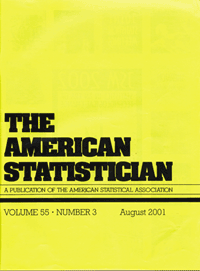Group Testing, Randomized Testing, Leadership Featured in May Issue of TAS
Daniel Jeske, TAS Editor-in-Chief

The May 2019 issue of The American Statistician features 12 articles spanning a variety of topics.
The General section has five articles. One discusses group testing and includes an overview of the field while delving into constructing optimal designs. A second article introduces randomized testing to the context of non-negative distributions with zero clumping. Confidence intervals and point estimation based on randomized tests are also discussed. A third article considers Bayesian analyses of multinomial distributions with particular interest in how alternative priors have advantages and disadvantages for data with zero count categories. A fourth article formulates the two-sample t-test in a geometric framework and establishes connections between Student’s t-distribution and Fisher-Student’s central hypersphere h-distribution. The fifth article in this section discusses three keys to statistical leadership and includes illustrations from the drug development industry.
The Statistical Practice section has three articles. The first proposes a new incomplete block design motivated by a poster-judging application. The second article advances a new visual display that avoids pitfalls when using overlapping confidence intervals to make statistical inference. The last article develops a team-drafting strategy for fantasy basketball leagues based on a Bayesian analysis of a mixed-effects model.
There are two articles in Teacher’s Corner. The first offers an alternative way to teach Bayes theorem that emphasizes how prior beliefs about the parameters are updated. The advantages of this approach are discussed, with the main one being is easier to see how the prior specification affects the updating. The second article is another look at tail formulas for higher moments of a non-negative distribution, with emphasis on discrete distributions.
The issue also contains a short technical note that follows up on a recent TAS article about closed-form estimators for the parameters of a gamma distribution. The article in this issue presents alternative closed-form estimators with less bias.
The May issue concludes with an article in the Statistical Computing and Graphics section that introduces the use of ternary plots to visualize and interpret regression coefficients in a trinomial logistic regression model.

















